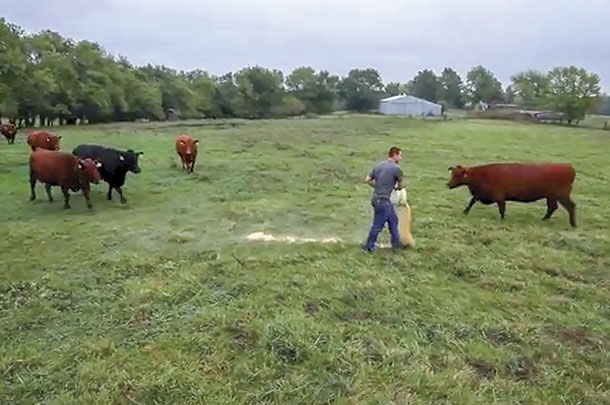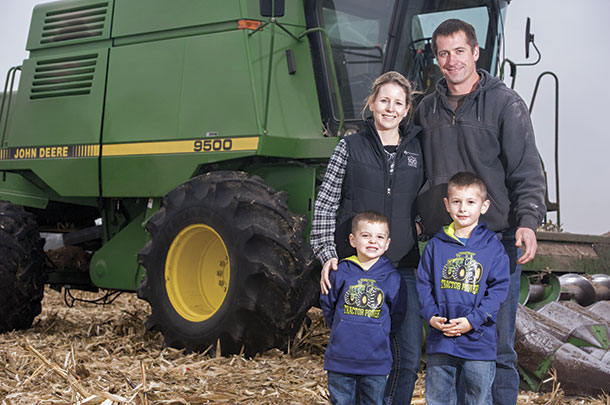Those words of principle from Aldo Leopold were recognized early on in his conservation endeavors. He spent his life working to share those ideas with others through example and direction.
Established in 2003, the Sand County (Wisconsin) Foundation’s Leopold Conservation program serves as outreach in bridging public perception in conveying the message that, besides food and fiber, clean water and air comes from producing and working agricultural lands.
Applicants from partnering Sand County Foundation states are invited to compete for a monetary prize to aid in the institution of new conservation practices or the continuation of current practices. All applications are evaluated on the principles of conservation ethic, ecological community investment, innovation, adaptability, resilience, leadership and communication.
In 2017, Sand County Foundation, in partnership with Missouri Farmers Care, brought the Leopold Conservation Award to the voluntary land-owner stewards of Missouri.
“So many farmers and ranchers across the U.S. are unsung environmentalists, living an Earth Day ethic every day in the way they farm and care for their land and animals,” says Missouri Farmers Care Executive Director Ashley McCarty. “And with consumers caring more about where their food comes from and how it is raised, we hope that the Leopold Conservation Award gives them a window into the realities of farm families.”
In December, the Matt and Kate Lambert family, Uptown Farms, became the first Missouri family awarded the Leopold Conservation Award through the partnership.
Diversification pays
Like many young people looking for opportunities to come back to the farm, Matt and Kate discovered diversifying income opportunities could subsidize their dreams of not only coming back to the farm but also growing a viable farming operation.
With pasture a scarce commodity in north central Missouri, Uptown Farms began to look for alternative, out-of-the-box solutions to their grazing needs.
“We actually started cover cropping because we couldn’t find additional grazing acreage,” Kate shares. “The benefit to our row crop was sort of a secondary result for us.”
Today, Uptown Farms runs a Red Angus cow-calf herd with their rotational corn and soybean row crop farming operation. The farm uses cover-cropping rotations to maintain active and productive soil biodiversity and provide off-season grazing for their herd.
Matt says the cover-cropping system Uptown Farms employs benefits the farm in several ways, with soil health being the broad focus of the management model.

“With the cover crops, what we try to do is select (varieties) that will break down and become a new soil. We try to get a cereal rye or triticale that will make a big thick mat that may take two years to break down but, as it does, you can see the earthworms and where the microbes are eating the plant material, feeding that top layer and creating organic matter. It’s amazing how fast the material disappears after that first couple of years because of that new environment you have created.”
This past fall, using a custom airplane application service, a combination of turnips, clover and hairy vetch was aerially seeded into a still-standing corn crop. The growth from the trio of cover crops sustained the health and growth of the soil ecosystem throughout the winter months, both before and after the corn crop was harvested.
Since early March, the Lamberts’ cattle have been grazing the cover crop, saving hay and helping to redistribute the nutrients within the field – an advantage the couple estimates saves them about 20 percent of the hay they would normally feed.
“Cover crops give us more grazing acres,” says Kate. “They increase our grazing days in the fall and the spring and allow us to push back spring turnout until our grass stand is good and healthy. Which is important in years like this, where the temperatures have been low and we haven’t gotten good growth on our pastures.”
Whether in the pasture or on a cover crop field, the operation utilizes strict rotational management, making sure acres aren’t overgrazed, which could negate the benefits the cover crops provide the soil ecosystem.
“We rotate throughout grazing, not just in the summer but throughout our entire grazing season, to maintain a healthy grass height,” says Kate. “We are always mindful of where we are grazing; we make sure we are watching water levels to minimize runoff and keeping in mind where water levels might be based on the weather. We are careful about where we winter cattle. We don’t want to create potential water pollution sources if we have heavy rains.”
The Lamberts say cover crops are also becoming a matter of discussion in stocking rates on the farm.
“Historically, we’ve figured three acres per cow-calf pair. Today, we are at a point where we are reconsidering the rate and will, most likely, increase our stocking rates. This is directly due to cover crops and the increased grazing days and area we have available because we are using them.”
Telling their story
Innovative cover-cropping strategies and conservative grazing practices aren’t the only progressive approaches Uptown Farms are taking in the conversation of modern agriculture.
The National Corn Growers’ Association’s checkoff-funded CommonGround program gives farmwomen across the U.S. a voice in the conversations surrounding consumer food choices and the drivers behind those choices.

As a Missouri CommonGround volunteer, Kate uses her knowledge and passion for modern agriculture advocacy to reach other mothers with Uptown Farms’ message of sustainability, conservation and on-farm animal welfare through face-to-face conversation and via the Uptown Farms blog she posts on weekly.
Professionally, Kate serves as the director of marketplace education and engagement for FCS Financial, a farm credit cooperative helping to bridge the gaps between agriculture professionals and students and the rest of the population. With thousands of followers, Uptown Farms’ modern agriculture family story reaches the masses through the many channels the family is actively engaged in.
Whether the conversation is advocacy, herd management, conservation or business, the Lambert family is helping to set the standards for transparency and communication. And with so many moving parts to the story of agriculture, it is easy to appreciate the progressively holistic approach the family is taking to ensure their farm is part of the conversation. ![]()
PHOTO 1: The Lamberts see early grazing opportunities by utilizing cover crops. This photo shows the growth and greening of the forage.
PHOTO 2: Matt Lambert feeds a group of Red Angus cows.
PHOTO 3: Kate and Matt Lambert with their two sons. Photos courtesy of Uptown Farms.
Laura Handke is a freelance writer based in Kansas. Email Laura Handke.






